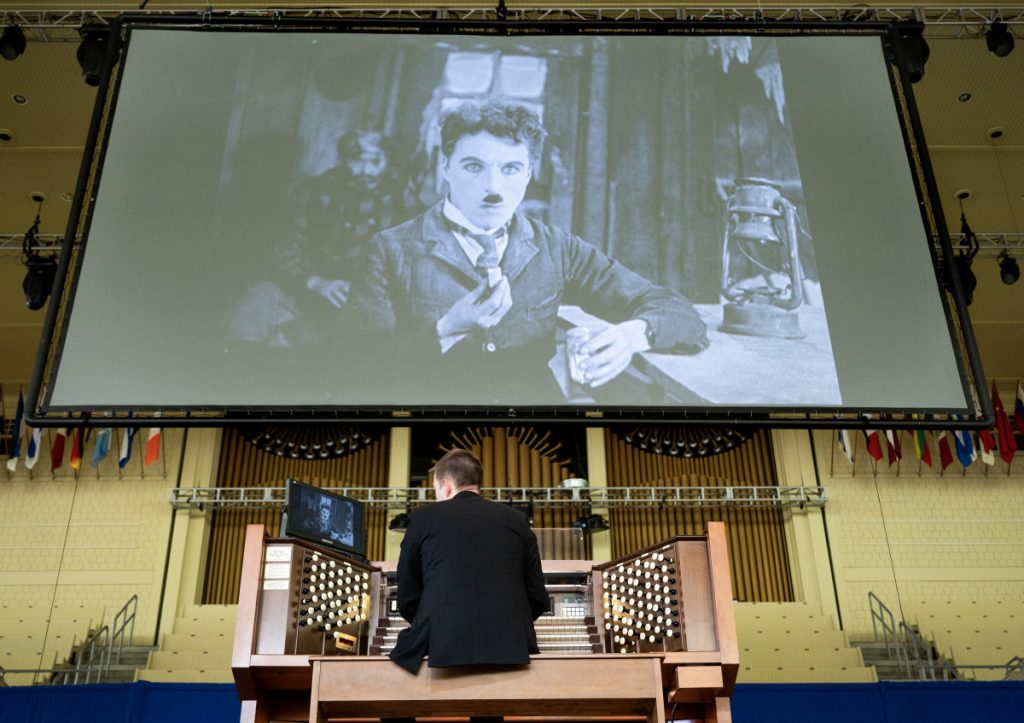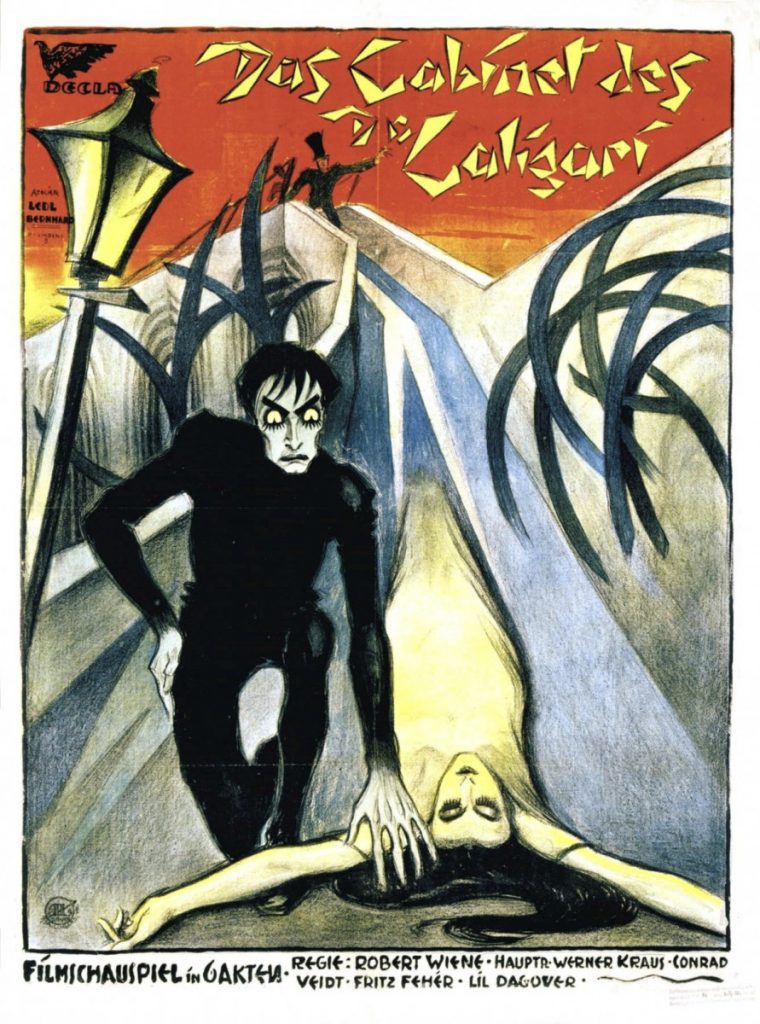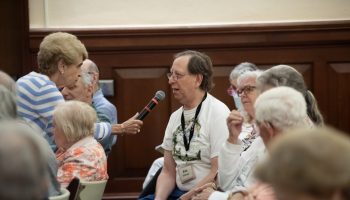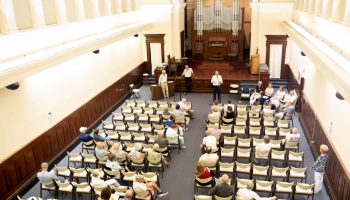
Liz Delillo
Staff Writer
Thematicizing authority, sanity, rebellion, perceived reality and human nature, “The Cabinet of Dr. Caligari” is a quintessential piece of silent film, horror and German expressionist cinema. Directed by Robert Weine and written by Carl Mayer and Hans Janowitz, it takes place during the Weimar Republic, following a hypnotist and his somnambulist within the dark, sharp and twisted visuals of German expressionism.
At 3 p.m. Sunday in the Amphitheater, Chautauquans can experience this classic first-hand with Joshua Stafford taking the bench for the Great Massy Movie presentation of “The Cabinet of Dr. Caligari.”
A native of Jamestown, Stafford is an internationally renowned, award-winning organist, and the director of sacred music and Jared Jacobsen Chair for the Organist of Chautauqua Institution. He was unanimously named the Pierre S. du Pont First Prize Winner at the 2016 Longwood Gardens International Organ Competition.
The Institution began featuring silent films with Stafford on the Massey Memorial Organ as the final Amp performance several years ago. Often, the films were comedies, Stafford said, “which are a broad appeal, but the most difficult to play because of timing because you have to time all the gags (and) stresses right.”
While Sunday’s Massy Organ Movie selection is often regarded as the first horror film, it doesn’t feature graphic violence and is more of a psychological thriller.
“Horror is a little more fun because you can be kind of moody with it. With ‘The Cabinet of Dr. Caligari’ being a German expressionist film, it has such a distinct visual style that it then informs the music,” Stafford said. “You’re just sort of creating this atmosphere, that the movie has already started for you, and then you get to create it in that space.”
Silent movies in the 1920s often featured the theater organ, developed for sound film specifically.
“I was not raised as a theater organist. I was raised a little more traditionally, and I did a lot of improvisation study, especially when I was in grad school, in the French cathedral tradition, sort of the Paris improvisation style,” Stafford said. “… And I feel like that sort of style works better for a horror film than it does a comedy.”
Shedding light on the improvisational element he’s bringing to Sunday’s performance, Stafford shared how he approaches that with film accompaniments.
“My tradition has usually been to sort of create my own sort of spread, to create themes for characters and then improvise from that,” Stafford said. “For this particular film, I’m actually working off of an existing score.”

Stafford is working with the score he’s “pretty sure” is by Giuseppe Becce, the Italian film score composer who wrote the music for the movie’s 1920 release.
“I feel like this is going to be a fun movie for using some really quiet ethereal effects, just some moments with the organ sort of rumbling quietly beneath what’s happening,” Stafford said.
An improvisational silent movie accompaniment is a dynamic endeavor, especially with the sharp dramatization of horror and German expressionism.
“I always thought, playing a movie like this, it’s never the same twice,” Stafford said. “It’s sort of the general idea of what you’re doing — in the moment, whatever mood I’m in — but more importantly, whatever I’m getting off the audience. There’s a lot of audience feedback that plays into the way I play a film, which is a really cool experience.”
With movie screenings with orchestral accompaniments growing in popularity, Stafford noted how accompanying silent films is “a unique art form.”
“I think it was sort of lost for a while, but has had a real resurgence in recent years,” Stafford said. “… It’s really fun to rediscover these films that are sometimes forgotten, or at least films that audiences are unlikely to have seen before. And even if they have experienced silent films, like watching them at home, watching it with a pre-recorded soundtrack is not the same as experiencing it live in person.”




